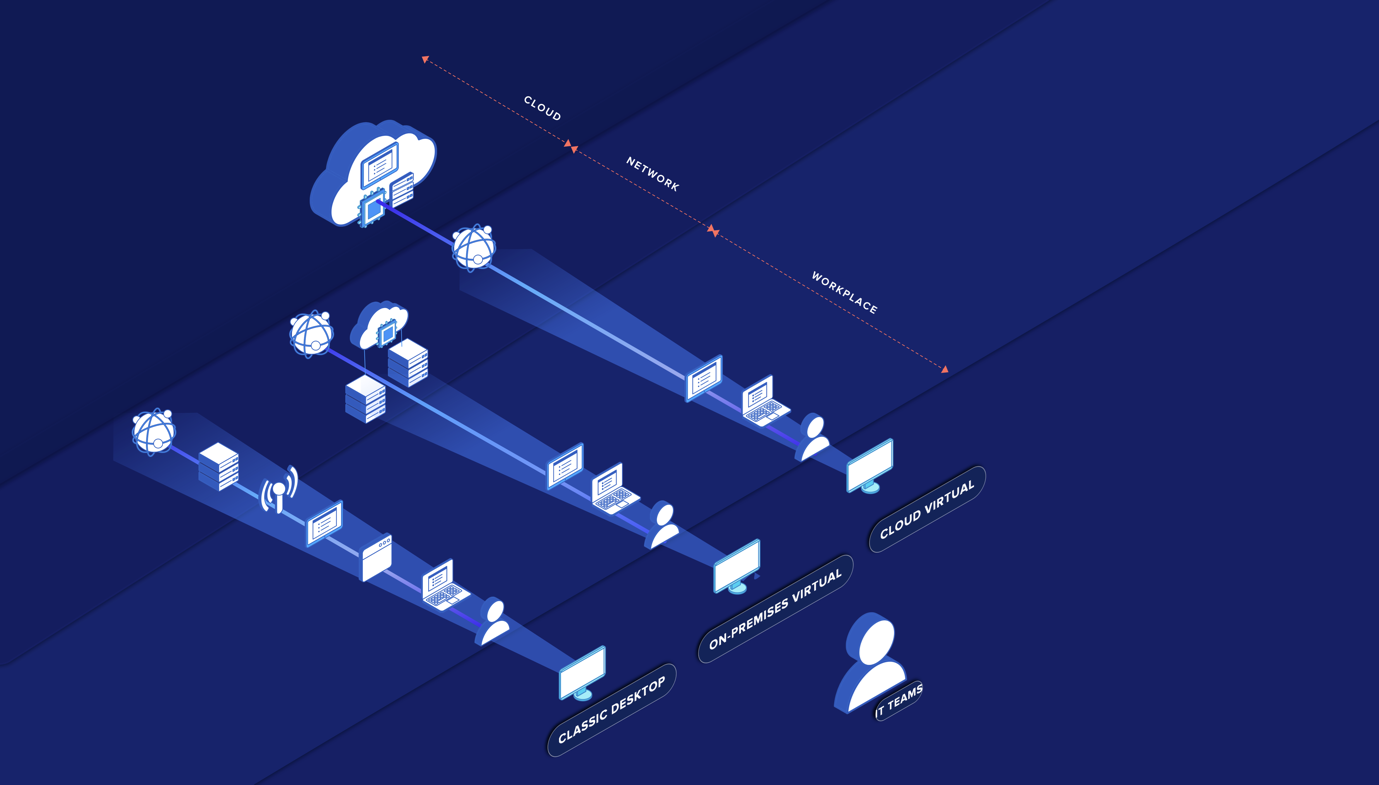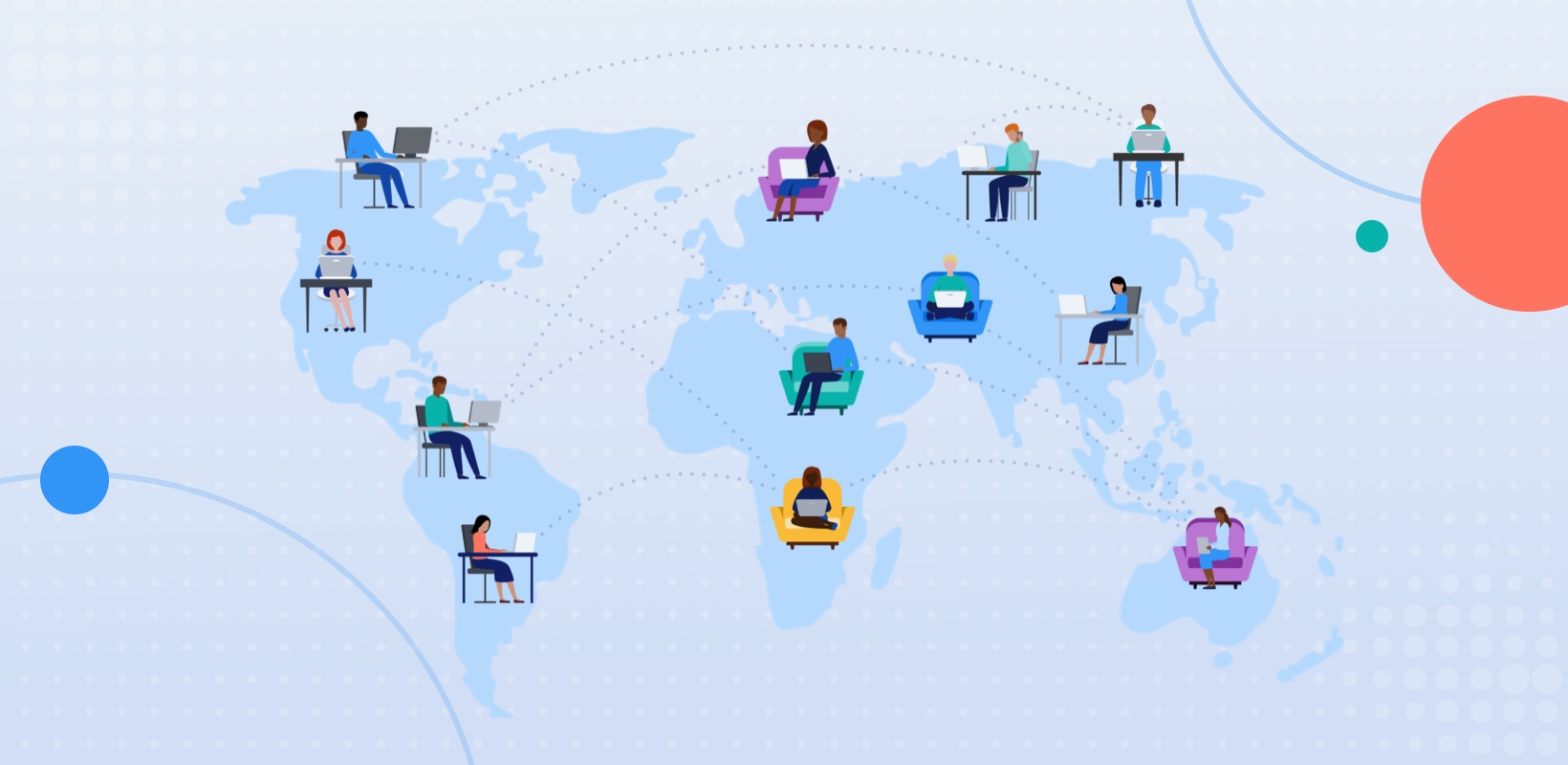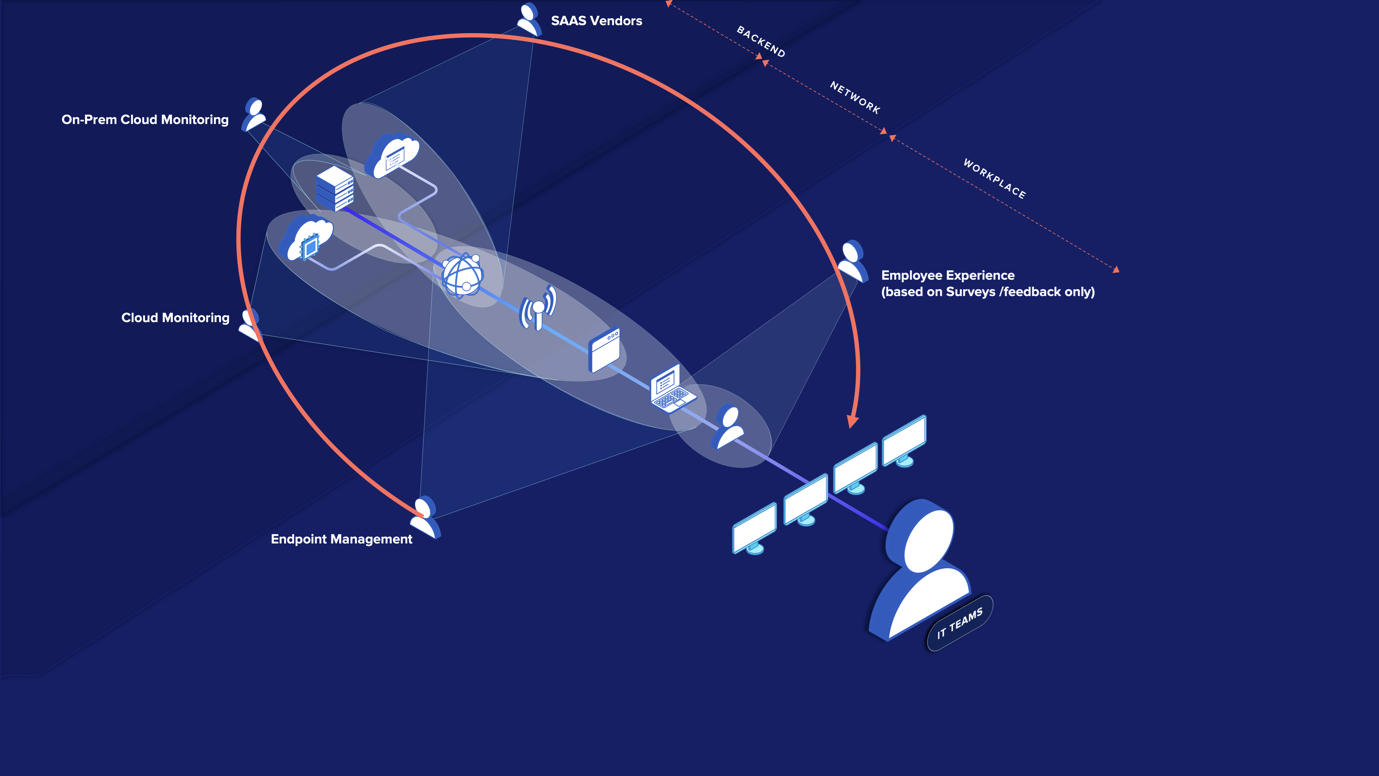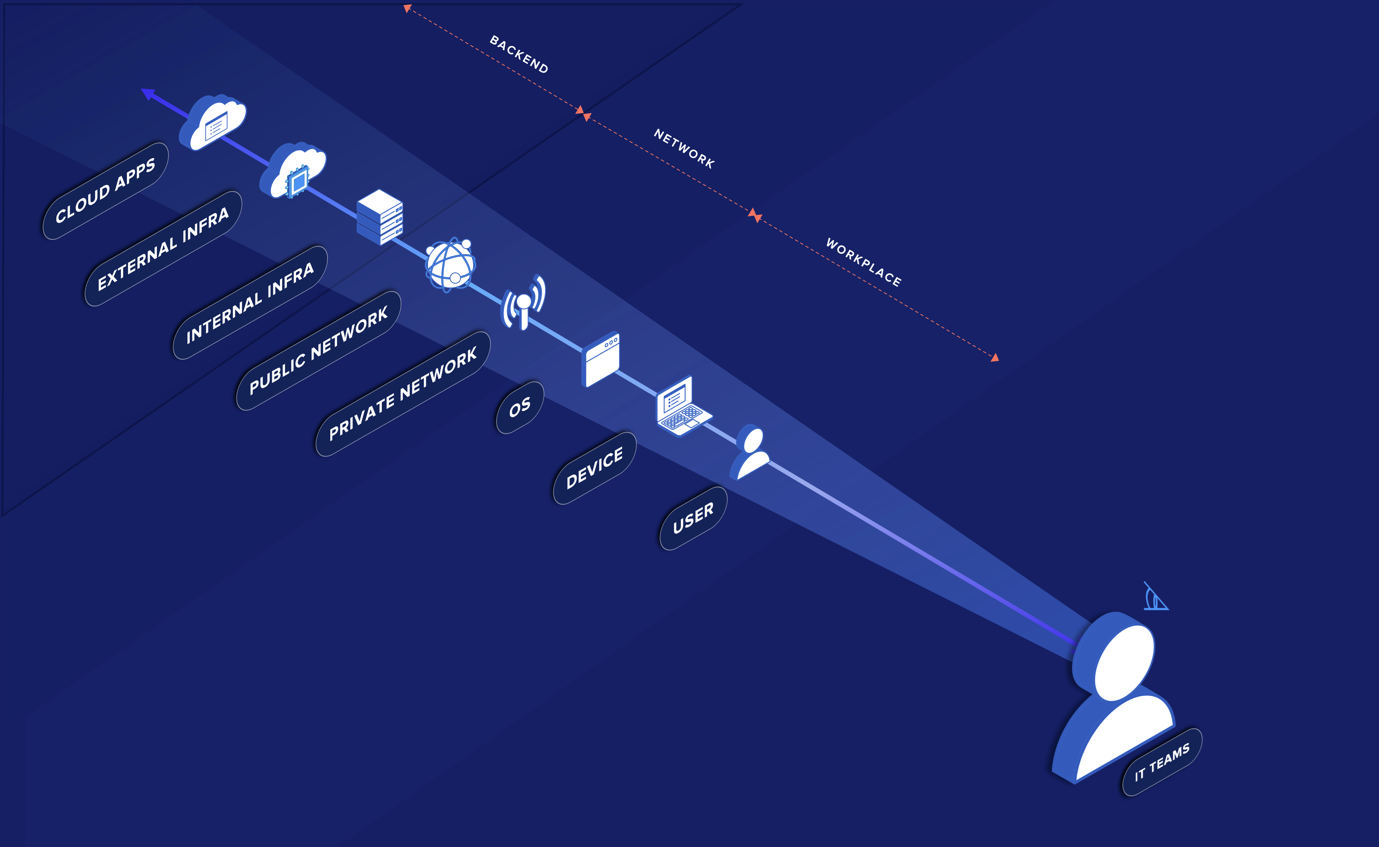Solving the Top 3 IT Visibility Challenges in the Digital Workplace
Managing workplace technology is more complex now than ever before. A burst of technological innovations aimed at creating efficient digital workplaces has created more flexibility for employees but something of a monster for IT to manage.
The complexity of the digital workplace at the enterprise level requires IT teams to gain visibility into every digital asset, across all physical and cloud environments. This is the key to better application monitoring, enterprise security and business advancement, yet IT teams still struggle to achieve this. So long as they lack this complete visibility, the goal of continuous integration and continuous development will remain elusive.
Top 3 Challenges to Complete Visibility in Digital Workplace:
1) Overly Complex IT infrastructure
Due to the decentralization of businesses, we have employees working in hybrid workspaces, using different computing environments such as classic desktops, on-premises virtual environments, and cloud-based platforms. These environments increase the complexity of an already complex setup as the users can move between environments in real-time, and more than one environment can be running in parallel as users migrate between them.

IT teams have good control and visibility of the classic desktop environment, as they have been managing them for years. But visibility of virtual and cloud infrastructure remains a larger point of concern. Especially where these assets get managed by various third-party vendors, we have very limited to no control over the environments. This can create significant challenges when troubleshooting issues, leading to time wasted for IT, and lost productivity for the business.
2) Managing a Decentralized Workforce
Digital workplaces have become the norm, and most of the workforce is comfortable working in a hybrid environment. With more hybrid workers, the percentage of SaaS applications also increases, which leads to less IT control and less willingness to open IT tickets. Yet the IT team must ensure that the end users do not face any IT challenges that may interrupt their work efficiency.

A hybrid environment brings its own set of challenges that the users face when they
- Collaborate with remote employees
- Face technology failures and downtime
- Adopt and implement new technology and processes
How can we make this easy?
The accountability falls solely on the digital transformation team, i.e., the End User Computing (EUC), IT team but they lack the data required to solve these issues at scale. Digital workplace end-to-end visibility plays an integral part in building higher efficiency, and a deeper understanding of the experiences that employees have across various hybrid and cloud environments.
3) Using the Wrong Technology
Existing technology gives us only a partial view of what’s happening across the digital environment. Visibility remains the top challenge for every enterprise seeking insights such as employee’s digital usage, adoption, and experience. The EUC teams are responsible for unhindered business continuity and ensuring that the IT infrastructure and systems are completely operational 24/7. To achieve this outcome, they must have complete visibility of the entire technology environment. This visibility is essential for driving business outcomes.

In order to achieve success, the EUC team needs to be more proactive than their current reactive approach. Their current technology stack is insufficient to provide the visibility required to achieve their desired outcomes.
Let’s look at different technologies and where they fail:
- Endpoint Management Tools configure devices and roll out software, but lack visibility into connectivity and application access challenges faced by employees.
- Infrastructure Solutions give information on the efficiency of applications on cloud or on-premises datacenters but do not provide metrics to gauge the experience of the user and the issues faced by them.
- SaaS Applications even for SaaS-based applications, digital transformation teams have a blind spot. They are unable to see a unified view as each vendor is concerned with their standalone application.
- Network Monitoring Solutions EUC teams can easily monitor the corporate network performance using network monitoring tools, this becomes irrelevant when employees work from home or connect outside the corporate network
- Survey-Based Solutions The EUC teams fine-tune their offerings based on insights from employee engagement surveys, most of the time these are not relatable and out of context.
Risks of Low Visibility
Without end-to-end visibility, businesses risk rising costs, lost productivity, and negative impacts on the success of the organization. Let’s delve into the top 4 risks of low visibility.
- Strong Operational Focus and Issue Detection: Ongoing guidance on issue prioritization and troubleshooting becomes a challenge as the End User Computing (EUC) teams are unable to precisely find the issue reported by users in the infrastructure
- A mismatch between IT technical data and employee sentiment: There is a clear gap between real-time employee perspective, employee sentiment and how applications are being adopted and used. IT or the EUC teams are not able to react swiftly when certain critical services fail across locations. End users are complaining about experience issues, but IT teams are struggling to figure out the exact source of the problem
- Compliance and Security: Gaps on various applications, computing systems, and networks can result in security threats and data breaches. Non-compliance with IT standards can create loopholes that can be exploited by unscrupulous organizations across the world.
- Shadow IT: Unapproved shadow IT can pose a huge threat as the data stored in the personal accounts cannot be monitored, or managed as it is not accessible by the company
Is there light at the end of the tunnel?
IT needs end-to-end Visibility
See, Diagnose and Fix is the way enterprises resolve issues. After all, ‘You can’t protect what you can’t see.’

The digital workplace teams need a comprehensive solution to monitor and troubleshoot issues from the employee’s device to the backend systems, so they can answer questions like, are my employees having any issues at work? and can I detect any issue, across any computing devices, from anywhere they connect, and with any application they use?
These questions can be answered by an end-to-end solution that allows complete enterprise visibility, an absolute need in this age of hybrid working environment.
Learn in detail about Nexthink Enterprise Visibility
Related posts:
- The Ultimate List of Digital Employee Experience Job Titles
- The Success of Hybrid Work Hinges on Technology
- What is the Distributed Cloud?: The Hybrid Cloud Solution Driving the Future Workplace
- The 7 Pillars of DEX Visibility: How Nexthink provides a complete picture of your Digital Workplace